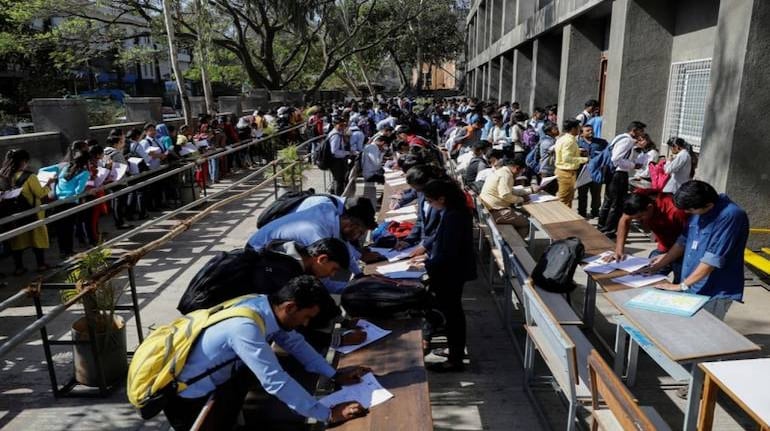



Urban unemployment soared to 17.41 percent in the week ended May 23 from 14.71 percent seven days earlier but the situation in rural areas improved, data from the Centre for Monitoring Indian Economy (CMIE) showed.
Unemployment rates are trotting back to the record levels reached during the national lockdown last year as several states have imposed severe restrictions in the face of the deadly second wave of COVID-19.
All India weekly unemployment inched up to 14.73 percent from 14.45 percent recorded earlier but in rural India, it fell to 13.52 percent from 14.34 percent over the same period.
The unemployment rate in India has been in double digits, almost double the rate recorded in early April ( 8.16 percent) when the second wave of the pandemic started ravaging the country.
"The double-digit unemployment rate seen in recent times indicates that even these restrictions are taking a toll on the economy," said Mahesh Vyas, Managing Director of CMIE said in a post.
Vyas said the rural unemployment rate was a concern because it had had been about 6 percent in recent years and rarely touched 8 percent before the lockdown. “It warrants a greater deployment of the MGNREGS," Vyas said, referring to the Mahatma Gandhi National Rural Employment Guarantee Scheme.
Prashant Singh, vice-president and business head-compliance and payroll outsourcing, TeamLease Services, said salaried job holders from sectors like hospitality, real estate, construction, retail, SMEs and ancillary manufacturing units have contributed to unemployment.
Singh however said organisations were better prepared this time to handle the lockdowns which were staggered and state specific. The awareness on lockdown management and vaccination has boosted the sentiment despite the second wave being more deadly.
Ashwini Deshpande, Director, Centre for Economic Data and Analysis (CEDA) at Ashoka University said, "While the lockdown is not as stringent as last year, the ferocity of the second wave has resulted in curfews in large parts of the country, which are like mini-lockdowns. As a result, economic activity in the cities has slowed down considerably."
"Many migrants have returned to villages where there is no gainful employment which can absorb the returning migrants. The rise in rural unemployment means that the resources allotted to MGNREGA have to be increased. In cities, unless economic activity revives, unemployment will remain high," Deshpande added.
Labour expert and Professor, HRM, XLRI, Xavier School of Management, KR Shyam Sundar said, "Even though there is no absolute lockdown like last year, it was expected that there would be a spike in employment rate as the curbs and restrictions by the state governments have impeded the trade and commerce, FMCG products and consumer durables moreover the demand for sesonal products too has been severely impacted for a second year in a row."
Unlike last year, covid has penetrated into the rural areas as well which has reflected in the overall unemployment rate therefore far worse days in terms of unemployment and poverty can be anticipated in future as a result, he added.
According to a May 17 report by QuantEco Research, urban jobs, captured by online Naukri Jobspeak index indicated a near complete recovery in hiring compared to pre-COVID levels by March-21 however April-21 has seen a sequential dip in hiring to the tune of 15 percent. In similar vein, CMIE unemployment rate, has risen to 14.45 percent (as of 15th May-21) compared to the recent trough of 6.25 percent in the first week of Mar-21.
"Although the unemployment rate remains much lower compared to the peak of 23.52% in Apr-20, the impact of more stringent and pervasive lockdowns at the state level in May-21 are yet to get fully captured," the report said.
Discover the latest Business News, Sensex, and Nifty updates. Obtain Personal Finance insights, tax queries, and expert opinions on Moneycontrol or download the Moneycontrol App to stay updated!
Find the best of Al News in one place, specially curated for you every weekend.
Stay on top of the latest tech trends and biggest startup news.